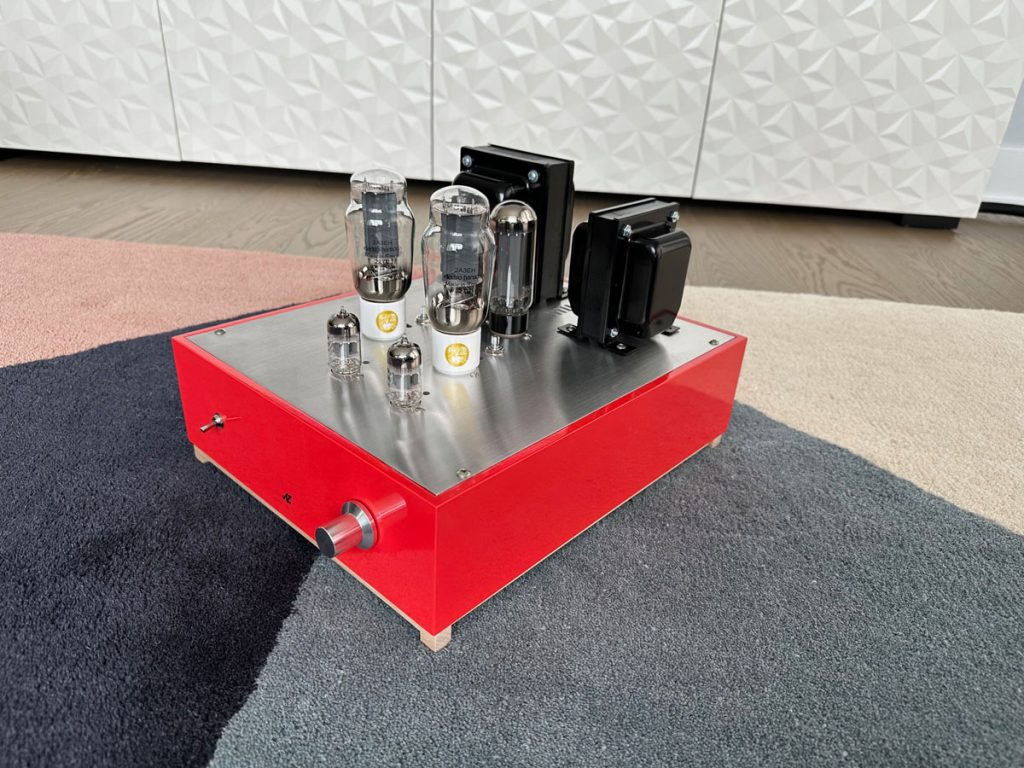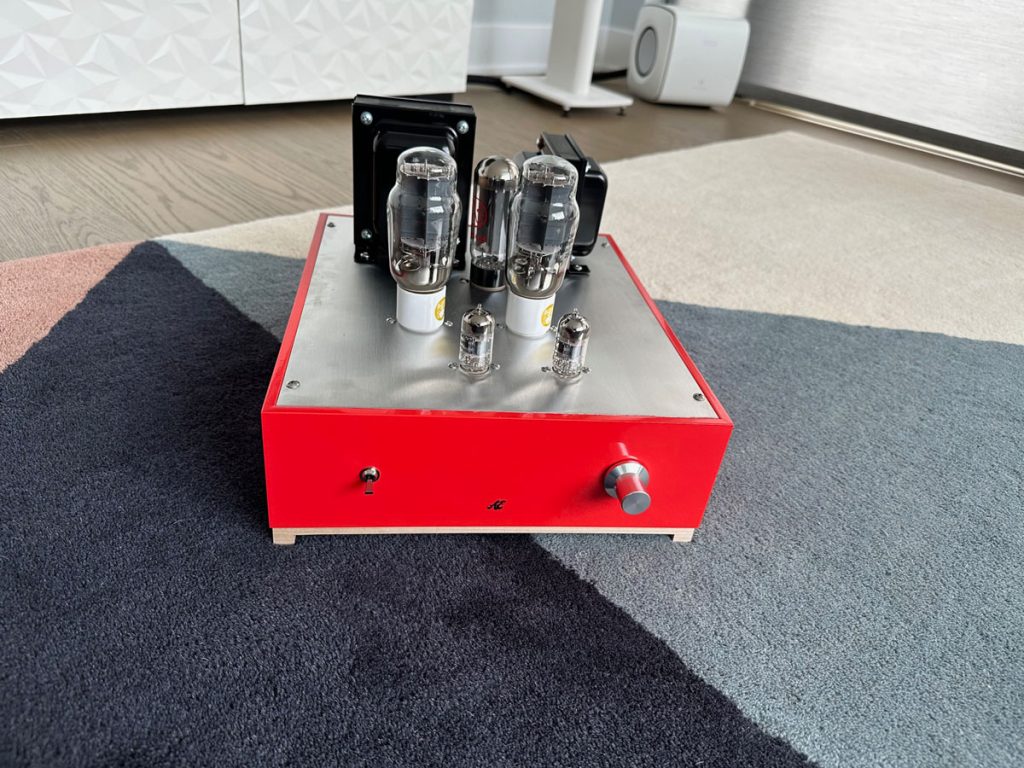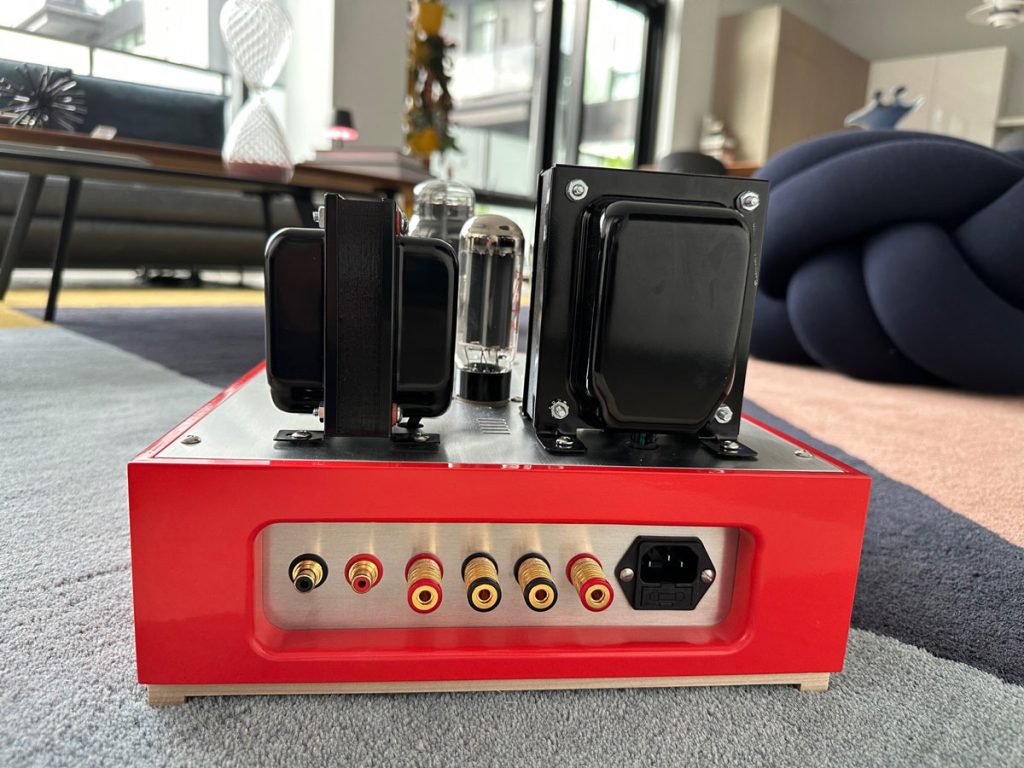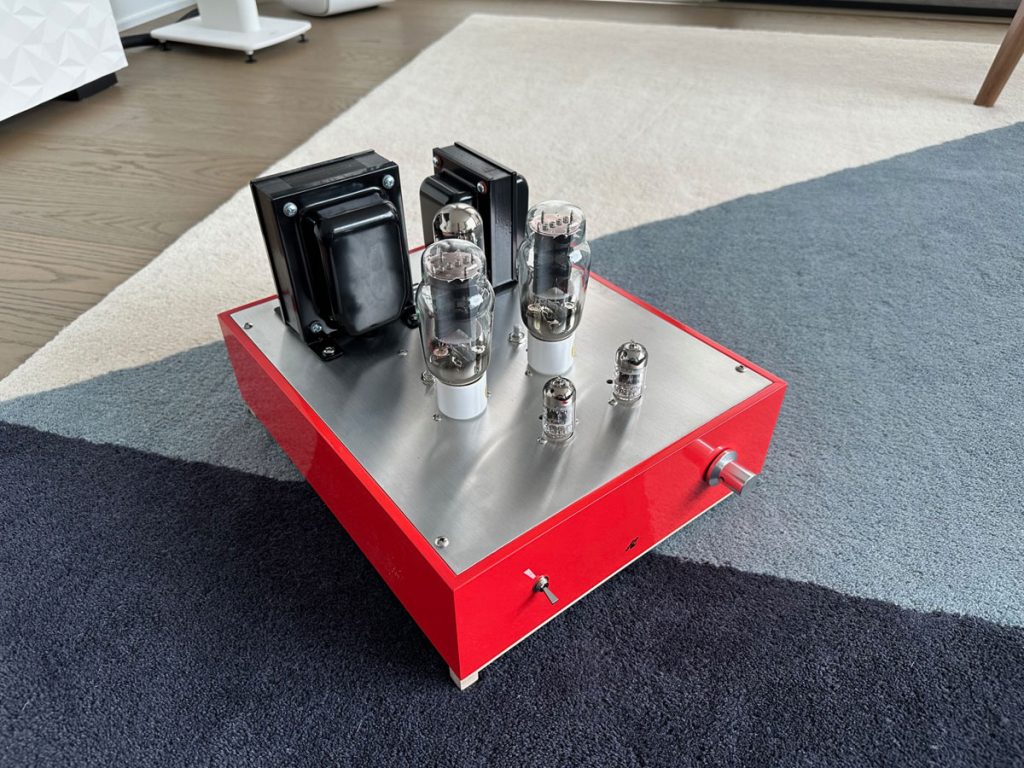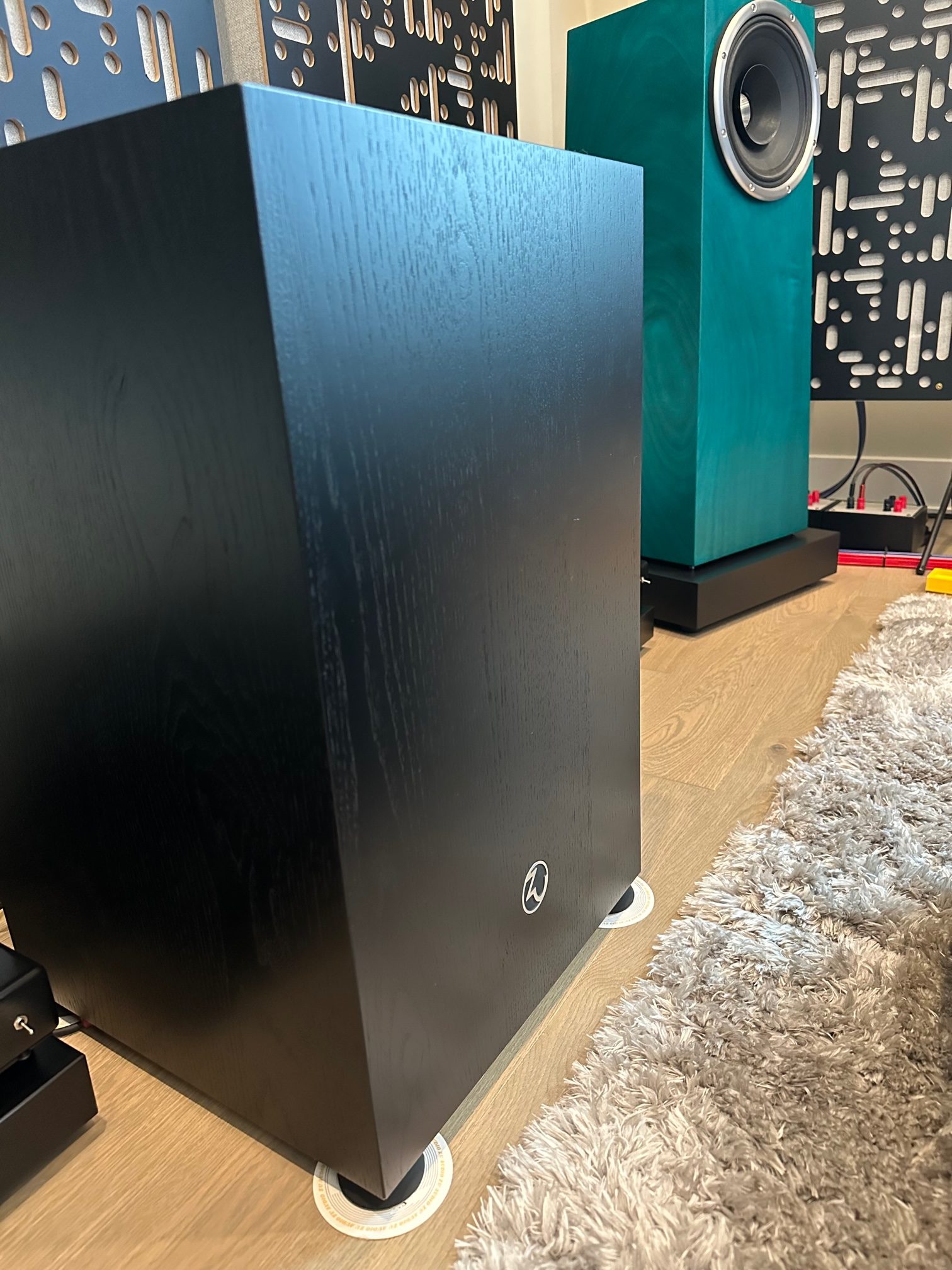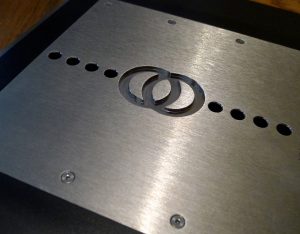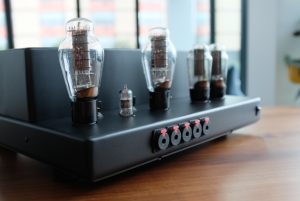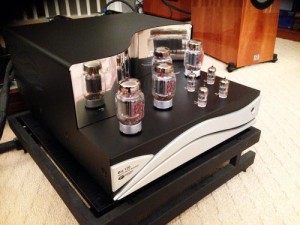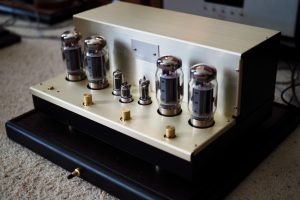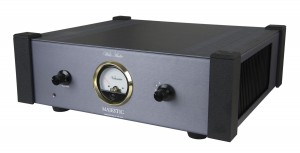Sometimes you listen to a piece of equipment, and its performance gives you pause. Sometimes that pause is a good thing because what you're listening to is performing better then you expect. Unfortunately, sometimes it's a bad thing, candidly most of the time it is a bad thing. However, this review is about one of those rare moments when a piece of gear performs so well that you simply stare at it and wonder "how?" This review is about the Analog Ethos Legendarium.
Perry, the owner of the Analog Ethos, entered the tube amp assembly world as a hobbyist, assembling his first tube amp about 10 years ago using a PCB kit. He enjoyed building it, but wanted to learn more about how and why it worked, so he went off and began learning. Learning and teaching are core to Perry's values, this is one of the reasons he chose to start Analog Ethos and offer kits. He wanted those who are excited to learn and build to have a way to do so and be successful. At the end of the day Perry just wants people to enjoy themselves, he wants people to love his products and to get to experience a hand crafted amplifier. Perry is a creative guy, he loves art and much of his background is in art. Analog Ethos has become a way for Perry to express his love of making things, and a way for him to bring artistry to an industry filled with black and silver boxes.
You can see a glimpse of the artistry that Perry brings to the table when you look at Analog Ethos's website. It is cleaner, clearer, and better designed then most small manufacturers, and makes a great first impression. It was through the website that I first came across Analog Ethos. At the time I was looking for a kit. My goal was to learn how to assemble a tube amplifier so that I could begin building my own in my spare time. My goal was not to sell them, but just to try out different ideas, topologies, and tubes. What struck me about Analog Ethos was the amount of care that went into the website. A lot of time was spent describing his amplifier kits; the amps themselves looked like nice finished products, and the parts used were reasonable. Sadly I never ended up ordering a kit from Perry. The Chicago winter began to end, and I realized that between work and my already busy personal life, I was likely not going to have time to assemble an amplifier from scratch. Luckily for me Perry also offers to assemble his kits for you for a very reasonable markup. I reached out to Perry and asked him if I could review his Legendarium, and about four weeks later a box showed up at my door with a completed Legendarium inside.
Unboxing and First Impressions
The Legendarium is a 2a3 stereo amplifier capable of about 3.5-watts, with a distortion measurement at 1 watt of about 1% which is reasonable for a direct heated triode. It uses the 12AY7 as an input tube, and is tube rectified with a 5U4GB. It can have a preamp in front of it, or you can connect a DAC directly to the amplifier and control the volume using the built in volume pot. All of this comes in an attractive case, with upgraded Jupiter coupling caps for $1950. This is easily one of the least expensive amplifiers I have reviewed in recent memory.
Unboxing the amplifier, it was immediately apparent that the weight was in the power transformer and the massive choke sitting on the top plate of the chassis. The output transformers were from EDCOR, and the power transform and choke were from Hammond. The case work itself has the look of a finished product and while I personally like amplifiers oriented to be wide in front and narrow on the sides, there is nothing I can really complain about when it comes to the Legendarium's looks. Spinning the amplifier around, on the back there are binding posts for an 8ohm load, and a stereo pair of single ended inputs.
The amplifier came with electro-harmonix 2a3s, 12AY7s, and a JJ 5U4GB. I only listened to this amplifier with the stock tubes, and while experience tells me it can get better with NOS or other new production offerings, I didn't feel they were really necessary. We will talk about it later in the review, but the amplifier sounded awesome with the stock tube compliment.
If you buy the Legendarium as a kit, it comes comes with a full assembly manual that includes a guided explanation for how tube amplifiers work as well as the full circuit design for the amplifier itself. Perry really puts his money where is mouth is. He wants people to be successful when they choose to assemble his amplifiers. The manual walked you through each step of the processes, taught you basic soldering skills, discussed grounding techniques, and even dove into how tube amplifiers work. The manual also went over the specific circuit of the Legendarium, the performance data from the circuit, and provided some explanation as to why Perry ended up basing the Legendarium on the particular circuit. The part list was clear and well defined, and I had no doubt that if something happened I would have no issue replacing a part. If you purchase the amplifier pre-assembled it will come with a stripped down manual focused on setup and use.
To be clear I did not try assemble one of Perry's kits. However, if I get bored this winter, I plan to give one a go. The documentation really is fantastic, and it may be false confidence talking, but I really do believe that I can successfully complete one of the kits.
Aligning on the value proposition
The Legendarium is priced incredibly reasonably as a fully assembled single ended amp at $1799 or $1950 with the coupling cap upgrade. I can tell you based on listening to this amp next to a few other single-ended amps that are priced between 2x and 3x the cost, that the Legendarium is a force to be reckoned with, matching or besting what I had on hand for my personal taste.
The pandemic has been rough on audio manufacturers and audiophiles alike. Supply chain issues have driven part costs up dramatically, and forced many vendors to expanding sourcing and placing larger minimum orders. As a result, the costs for the manufacturers as well as for the end consumer have gone up dramatically. It's not that these price increases do not reflect the realities of the world, it's that as all of this equipment becomes more expensive it makes it harder for people on a normal budget to enter this hobby. This is where I give Analog Ethos and Perry a lot of credit. He has worked to hold prices steady over the past few years, even though his parts costs have gone up. In the context of the larger audiophile industry I am impressed, and candidly thankful that he has chosen to keep his pricing accessible.
With that in mind, the Legendarium is my new recommendations for a entry level single-ended tube amp. I think it is so good at its price point that I was left speechless several times throughout my review period with it and I do not believe you can do better without spending significantly more money.
Now, at this price point you do sacrifice some things. Normally these are things I would bring up as negatives, but in this case I do not view them as such, and have not counted these against the Legendarium due to its price point and its performance. However, I do not want to ignore them as I do not want any buyers to be surprised: the case work is good, but is the first thing that gives away its lower price point when set next to my other amplifiers. There is nothing wrong with it, but it just does not have the same finish quality. The back panel flexes when you plug in banana connector or tight fitting RCAs, and the output transformers on paper do not have full bandwidth at their max output power (which is fine given they are over spec'ed for the Legendarium's output power). These things had no impact on the sonic performance of the amplifier, and at this price point I believe should and can be ignored.
Listening Impressions
Setting up the Legendarium for me was a simple process. I plugged in the tubes, and ran RCA cables from my DCS to the Legendarium. I paired the Legendarium with my Soul 6, which are a stable 8 ohm load and 100db/w efficient, a perfect match for a lower powered single ended amplifier. After adjusting the hum-pots I was ready to go. The whole system setup is detailed below:
- Amplifier: Analog Ethos Legendarium
- Source: DCS Rossini, Roon
- Power Conditioning: PS Audio P12
- Speakers: Zu Soul 6
- Cabling: Wireworld and Wywires
All parts of the system above had been listened to for at least 200 hours before critical listening was performed for the purpose of this review. All volume control was done using the DCS as both a preamp and a DAC.
The first thing I will say about the Legendarium is that it was incredibly quiet. Direct Heated Triodes are not the quietest amps around, and with 100dB/watt efficient speakers you can hear everything, so when I turned the amp on, adjusted its onboard volume to 100% and took a listen, I was surprised to hear nothing. Putting my ear to the speaker I could hear a slight hum but from my listening position the room was dead silent.
I began listening, and simply kept listening for a few hours. Well built 2a3 amps have a pureness to them that is really just special. They are detailed, bold, and smooth. Not artificially smooth, it is not as if the high frequencies have been rolled off, it is simply realistic and non-fatiguing. They lure you in, and make you fall in love. I was supposed to be taking notes the entire time, and instead I simply fell in love. Again, I have a soft spot for 2a3s but the combination of the Soul 6 and the Legendarium were just really special. What comes to mind when I think about those few hours is vivid imagery. The sound stage was clear, it was not huge, but it felt right size wise, with a ton of depth. Jazz and vocal pieces were particularly engaging, with Melody Gardot seemingly stepping in and out of my room.
I personally would not call the Legendarium warm, it is warm leaning, but instead I would call it more neutral, with big extension, and a natural tone and timbre. Now the Legendarium is not a miracle maker. Single ended amps, especially DHTs, are not great everything, and while I swoon over it, things like metal and complex rock do tend to sound better on a push-pull amplifier then on a single-ended amp. But jazz, live concerts, even modern pop really sounded great on this amplifier.
In my case it was rare that I got the amplifier to compress. I do only have a 10x10 room and I sit about 8ft away from my speakers so it is important to keep this in mind. The Legendarium extended well with the Soul 6. In my room they naturally roll off around 38Hz which didn't change with the Legendarium. Bass was tight, well defined, and had plenty of detail. I also tried connecting in my Zu Submission MK II using the high level inputs and I got the performance in the bass region that I have come to expect from my best amplifiers. Saying this differently with the right equipment the Legendarium gave up nothing in the bass region.
Once I remembered that I was supposed to be writing a review, I put on a few of my classic test tracks. Up first was Mika's Live at Brooklyn Steel album. Listening to the song "Popular" you could feel the energy of the crowed. Mika's voice was positioned more forward then I am used to, but the stage in general felt deeper. Instruments were well separated throughout the song and detail retrieval seemed to be consistent at high and lower volumes. As other songs on the album played, I continued to be impressed. The song "Tomorrow" thundered over my speakers and the clarity and depth of the stage was really felt. There were a few points where the sound stage lost a little definition, but these were also the most complex parts of the song (which again is okay in the context of a single ended DHT amplifier), turning the volume down slightly would restore the detail that was lost.
Listening to Use Me by Vanessa Fernandez, which is one of my favorite DSD albums, the Legendarium really delivered. The album played to all of its strengths. Female vocals came alive via the 2a3, and the minimalist soundstage was rock solid and picture perfect. Dynamic shifts were handled as well as I could ever expect and I found myself listening to the whole album, at times forgetting to write things down.
Concluding Thoughts
Perry, and Analog Ethos, really surprised me with the Legendarium. At its price point I was expecting an entry level amplifier. What I got was an entry level price, and an amplifier that could keep up with many of my favorite single ended amps, and even best them in some cases. What was sent to me was a complete answer to excellent HiFi on a normal person's budget.
If you are looking for a kit amplifier, I highly suggest looking at Analog ethos. If you are looking for a assembled DHT, once again I would suggest looking at Analog Ethos. If you want to know what my new favorite $2000 and below speaker amp is? Well its the Analog Ethos Legendarium.
I am sending the Legendarium back to Perry, not because I don't want to keep it, but because I want to eventually ask him to build me a set of monoblocks based off of the Legendarium's design. Will it change the performance, probably not honestly, but it better matches the way my system is set up.
Saying this a different way, I am so impressed that I will buying one of Perry's amplifiers before end of year. Thank you Perry and Analog Ethos for making believe in affordable HiFi again.
Legendarium Amplifier
Retail: $1799
Analog Ethos




